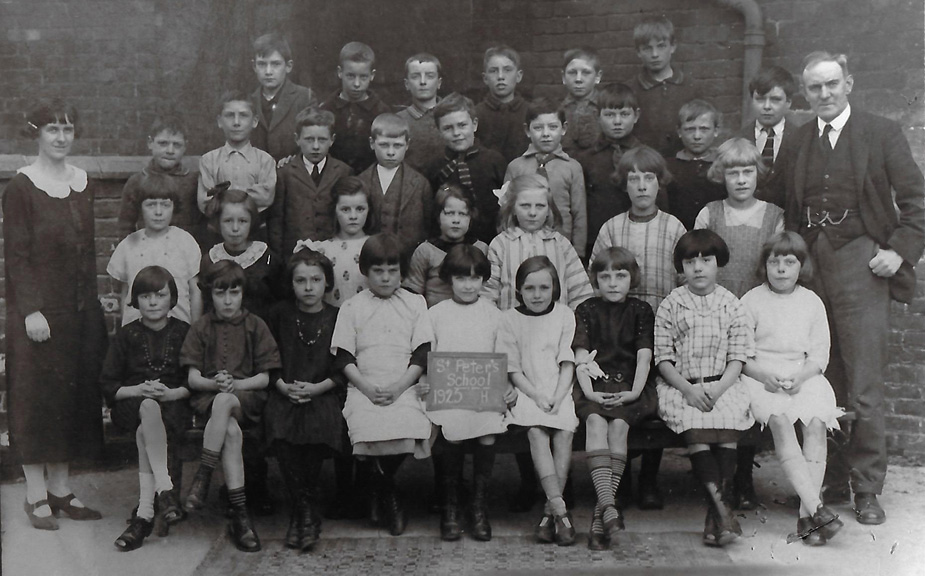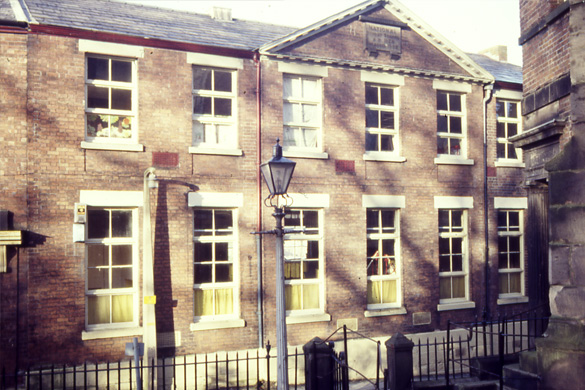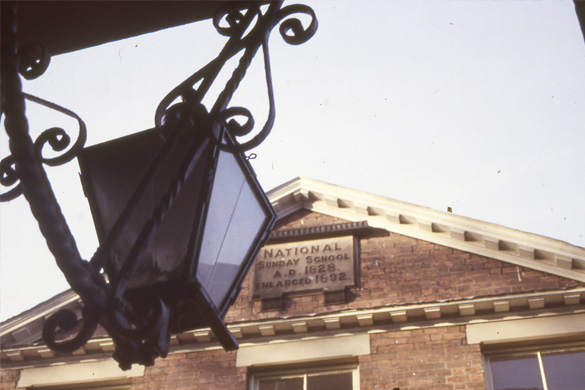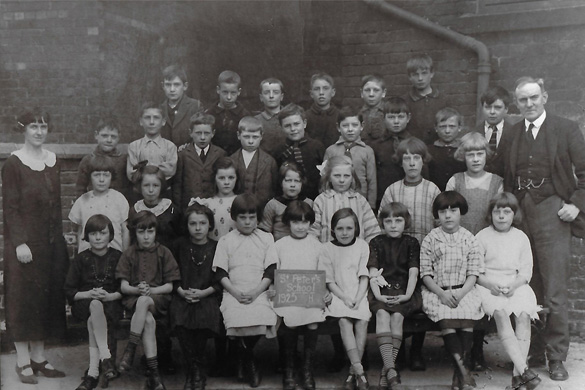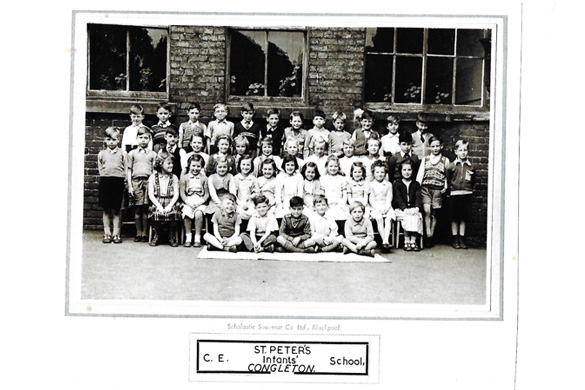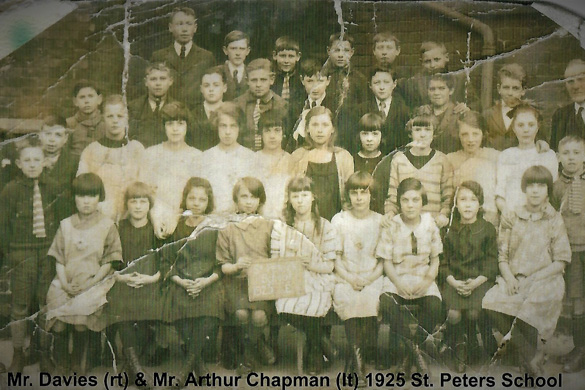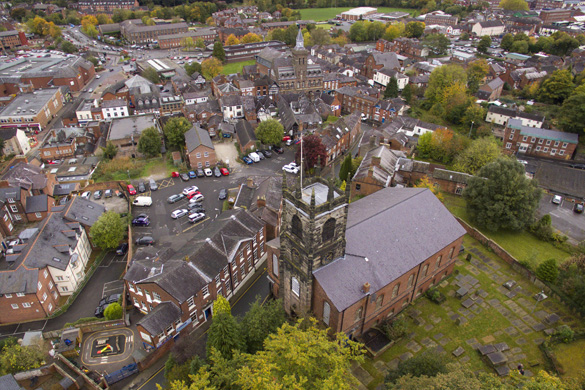St Peter`s National & Sunday School
From the late 18th century and in the nineteenth century children of the poor worked in the mills during the week to contribute to the family income and any education they received was in Sunday Schools. However, a movement developed in the Church of England to provide education for the children of every parish. This led to the establishment of National Schools in many parts of the country. In Congleton the Reverend Samuel Williamson and others had set up a school at the bottom of Canal Street by 1815. This expanded and moved to new premises in Chapel Street on land owned by William and John Smith. This became St Peter`s National School in 1828. By 1830 it had 380 pupils.
St. Peter’s Sunday School was carried on in the same building. According to its Trust deed the building can also be used for prayers and lectures. A day school opened in this building in 1837 with a grant from the National Society. Boys were taught in a large upstairs room and the girls and infants downstairs were divided by a partition. Weekly fees were 2d or 3d and the school was supported by voluntary contributions. After 1846 it received a substantial annual grant from the government. In 1849 less than half the children attended both schools and over 200 still went to Sunday School only.
After the Education Act of 1870 a School Board was set up but Congleton did not establish its own Board Schools. The Voluntary Schools in all parts of the town continued to educate the children of the poor. As education became compulsory the local authority took over control, although the vicar and wardens remained among the managers of the school. Attendance then became compulsory from the ages of 5 to 13, and with the appointment of an attendance officer numbers began to rise. St. Peter’s National School was extended in 1892.
In 1902 Local Education Authorities were established. Congleton was just large enough to apply to become an education authority for elementary education and after a lively debate Congleton town council voted to become a Part III authority and appointed an education committee and became responsible for the maintenance of the voluntary schools. The provision and repair of buildings remained the responsibility of the denomination.
However, it was not a happy period and economy was the main concern of the town council. In 1908 St. Peter’s had no playground and the lavatories were reached through the street. The church schools in the town formed a Joint Schools Committee which drew up a plan to save the three central church schools at a cost of £4000. St. Peter’s, and St. James were modernised by 1916 and work on St. Stephen’s was completed in 1920.
St. Peter’s continued as a school throughout the 1930’s, 40’s and 50’s; closing on the 23rd July 1965. The staff were transferred to the new junior school in Waggs Road. Three of the 20th century headmasters are shown in some of the photographs. E. H. Davies was headmaster for 35 years. Arthur Chapman was appointed assistant headteacher in 1924 and Headmaster in 1926. His daughter Joan used to worship at St. Peter’s. Stan Johnson was appointed head from 1st September 1954 and remained so until the school closed in 1965. He was then appointed Headteacher of St. James Junior School. Stan and Edith Johnson were married at St Peter`s and remained regular worshippers at St. Peter’s.
After its closure as a junior school the building was leased to two manufacturing companies, Slimma and Romar, before becoming a day nursery. A new lease was granted in 2007 to Mrs L Manley who rebuilt the business as Hilltop Day Nursery which is now in the hands of Kids Planet.
